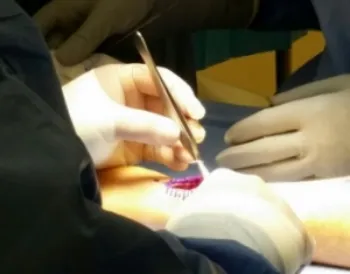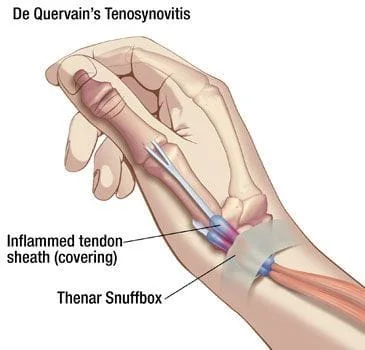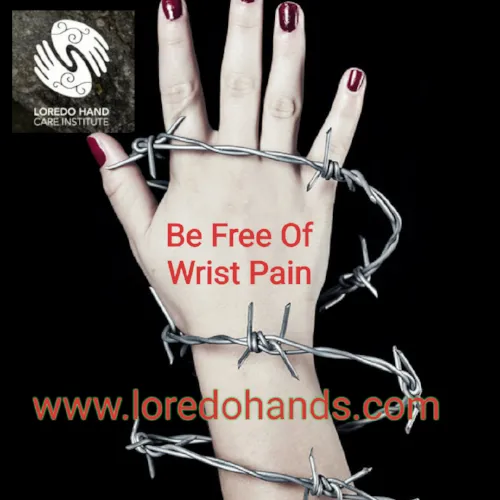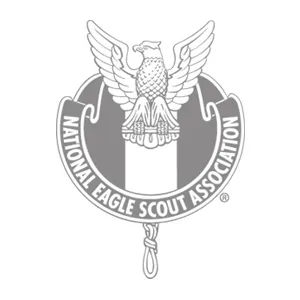Inflammation and swelling of the tendons can be very painful. Our De Quervain's Tendonitis Treatment in Dallas, Texas can provide relief.
Dr. Loredo offers surgical and non surgical interventions. Learn more about the Loredo Hand Care Institute and De Quervain's Tendonitis.

Dr. Pedro Loredo, treating De Quervains's Tendonitis with surgical intervention.
What is De Quervain’s Tendonitis?

Some more common names for this syndrome include gamer’s thumb, Blackberry thumb, and mommy's thumb. The condition was named after a Swiss surgeon, Fritz de Quervain, who initially identified it.
What Are the Symptoms of De Quervain’s Tendonitis?
Symptoms of De Quervain’s Tendonitis include the following:
- Pain and tenderness along the thumb side of the wrist which may travel up the forearm
- Swelling along the thumb side of the wrist, sometimes accompanied by a fluid-filled cyst
- Stiffness around the thumb and wrist caused by pain and swelling in this area
- A “locking” or “clicking” sensation when moving the thumb
- Muscle weakness or discomfort when carrying objects

Dr. Loredo’s Approach to Treating De Quervain’s Tendonitis
Non-Surgical Treatment Options
Depending on the severity of the condition, Dr. Loredo may attempt to treat non-surgically before recommending surgery. Non-surgical treatments include:
- Splints to support the thumb and wrist
- Anti-inflammatory medications (NSAIDs), either taken orally or injected, to relieve inflammation and pain
- Corticosteroids injected into the tendon sheath to reduce swelling and pain
- Simple avoidance of activities which cause pain and/or swelling may allow symptoms to resolve on their own
Surgical Treatment Options
In the event that non-surgical treatment is ineffective, Dr. Loredo will surgically open the tendon sheath, allowing additional space for and relieving pressure from the inflamed tendons.
What Can I Expect After Surgery?
Dr. Loredo uses the most advanced, minimally-invasive techniques available. Most patients recovering from surgery for treatment of De. Quervain’s Tendonitis have full use of their thumbs/hands within a few days and are able to get back to work within a week.
Frequently Asked Questions
What causes De Quervain’s Tendonitis?
De Quervain’s Tendonitis is most commonly caused by overuse or repetitive strain of the thumb. However, certain conditions such as Rheumatoid Arthritis or pregnancy can also be triggers.
Are certain groups of people at higher risk for De Quervain’s Tendonitis?
Yes, De Quervain’s Tendonitis tends to affect more women than men. Additionally, De Quervain’s Tendonitis commonly occurs before and after pregnancy, possibly due to hormonal changes, fluid retention and/or lifting (of the baby or child). However, anyone can develop the condition.
How is De Quervain’s Tendonitis diagnosed?
The most method for diagnosing De Quervain’s Tendonitis is by using the Finkelstein test. This is performed by making a fist with the thumb placed inside the palm and then slowly bending the wrist toward the outside. If the movement is painful, this may indicate De Quervain’s Tendonitis.
Contact the Loredo Hand Care Institute
If you are experiencing any of the symptoms associated with De Quervain’s Tendonitis or would like to learn more about our practice in the Dallas area, please contact us today.
